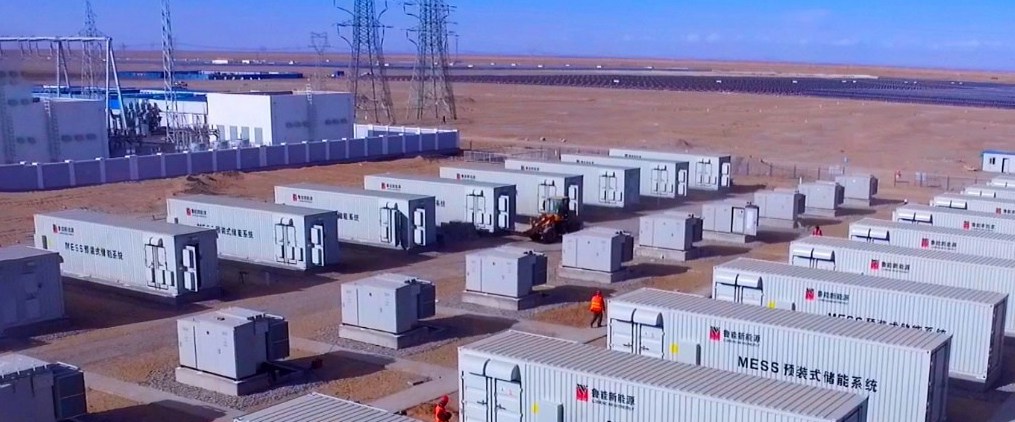
The use of a battery energy storage system (BESS) can prove to be quite beneficial as part of utilizing or distributing renewable energy such as from wind or solar systems. The BESS mainly consists of several batteries and rectifiers/inverters along with transformers and protective circuit devices. Batteries can be configured in modules of up to several megawatts, to be used in a variety of applications.
When energy is generated by wind or solar systems, it can be used many ways such as direct delivery to the load for consumption, delivery to the utility grid, delivery to an onsite storage system or a combination thereof. Clearly the latter presents a number of advantages as excess energy generated by the renewable system at times when winds are strong, the sun is bright, or power demand is low can be stored for later use, such as for moments when air flow is weak, at night time, or when power demand rises above average (usually at night time for residential properties).
From the utility company standpoint, storing of renewable energy in batteries has the advantage of stabilizing grid power, as it can help cover peak load times, and thus increase reliability and extend capacity. It also increases predictability of energy flow, which is often required by regulations, and which some have criticized renewables for not providing in the past. From the consumer standpoint, storing energy in batteries has the advantage of helping reduce utility bills as the battery system can be used to complement energy generated by the renewable system as primary source of power to help meet peak load demand which are often times when utility cost/kwh is higher.
BESS and traditional power are not either/or options. BESS can complement and supplement other primary generation systems. Battery systems can respond to voltage spikes and sags. Battery power can be a great alternative to diesel-powered generators as uninterrupted power supply during power outages of other sources.
BESS can work with decentralized or central systems, and those that are on-grid or off-grid. This can be key for providing power in remote communities or facilities, which may currently be relying on diesel generators as they are far from the grid.
Because BESS units may be placed close to the point of delivery, costs of transmission and delivery may be reduced, while reliability increases due to shorter distance of transmission and reduced likelihood of transmission loss. Another advantage of using BESS is that there are practically no major local emissions to take into account in terms of affecting residents in the area.
There are of course several different kinds of commercial-scale batteries that can be used in a BESS. These include Zinc Bromine Flow (ZnBr), Lithium ion (Li-Ion), Sodium Sulfur (NaS),Metal-Air, and Lead-Acid.
Valve-regulated lead-acid (VRLA) batteries are generally lower maintenance, do not spill or leak, and take up less room than legacy batteries due to their sealed construction, so they can be packaged tightly. VRLA reliability depends on several factors, including charge voltage, current and duration. But in general, you can expect a five-year life from them. A great majority of systems with power levels of up to 500 kVA use VRLA batteries.
Generally flooded cell batteries, sealed-cell batteries and flywheels are other top choices. Flooded cell batteries are the most reliable but also the most expensive. Flywheels can also be expensive but can be useful for certain space-critical requirements. However, they also have reliability and environmental concerns due to high rates of spin.
Some other considerations for choosing battery types:
- When lead-acid batteries are used, recycled lead (up to 99% secondary source) can be used.
- Fluid pumps, which are required for flow batteries, will decrease overall efficiency by 3-4%, or more if there are additional cooling requirements.
- Expected lifespan of lead-acid batteries is reduced by half with each 10º to 15ºF rise in temperature over recommended usage, of around 75ºF. VRLAs that overheat can dry out and experience open circuit failure.
- At the end of a battery’s life, the potential of excretion of toxic metals into the environment must be taken into account and limited.
As energy storage also plays a role in electric vehicles and consumer electronics, new technologies are being researched and developed that should impact the productivity, efficiency and reliability of industrial batteries as well.
